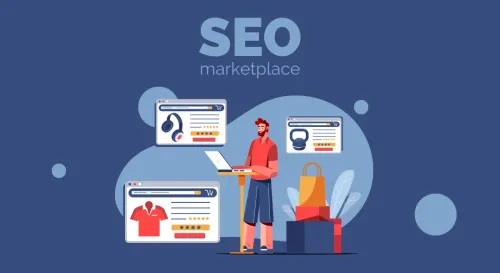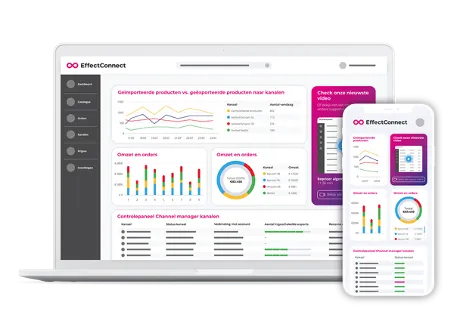The internet is full of them, success stories of people who have made good money by selling on marketplaces. It seems quite simple, but the reality is different, and it takes hard work to sell successfully on marketplaces. Having a good product is no longer sufficient. Besides good findability, a good content and advertising strategy is becoming increasingly important.
We at Follo have had the opportunity to advise many clients and conduct numerous account audits. What we notice is that the same mistakes are often made. To prevent you from making these mistakes, I would like to take you through the things you should pay attention to before you start selling on marketplaces.
Too little attention to the SEO part of the marketplace
For platforms like Amazon and Bol.com, besides commissions on sold products, advertisements are the main source of income. The first few spots on a standard search page are reserved for advertisements. Nevertheless, there are still plenty of places where you can appear organically. Of course, you have to make an effort for this. Think of regular keyword research and processing the results in SEO-technically important places. So, besides advertising, also pay enough attention to ranking well - organically - on important keywords!

Not looking at margins on a product level
It often happens that insufficient attention is paid to the margins of a product or product category. By considering the margins, products with a high margin can, for example, receive more advertising budget than products with a lower margin. Additionally, some products, where the margins are very low, are less suitable for selling on platforms. This is because the commission and shipping costs make up too large a part of the total costs. Yet, we often see that these types of products are included in the total assortment. So, be well aware of the margins so you can determine whether it is profitable to sell your product on marketplaces.

One-time attention to content
More and more sellers on marketplaces have realized that content plays an important role in whether or not they sell successfully. This is also evident from the products that appear on the first page on platforms like Amazon. Almost all of these products have multiple images, videos, A+ content, and a Brand Story. Yet, we see that many sellers think they are done after setting up the content once, but stagnation is regression, and that is exactly the point. Consumers are spoiled by all social media platforms regarding changing and innovative content. Setting it up once is therefore no longer good enough. If you want to remain relevant, you must ensure that you regularly change your content and respond to, for example, holidays and trends.
Inventory management
You can have everything well organized, but if your best-selling products are out of stock, you really have a challenge. This seems obvious, but it still happens regularly. Of course, some things cannot be predicted, such as extreme peaks in sales. What you can take into account is a separate inventory for marketplaces. Running out of stock occurs more often in practice with sellers who are active on multiple channels and where the inventory must be shared. By maintaining a separate inventory for marketplaces and paying sufficient attention to inventory management, you can prevent most inventory problems.

Advertising without a strategy
Selling on marketplaces without advertising is like cycling with a flat tire. It can be done, but it doesn't go smoothly. Most sellers are aware of this and advertise to increase their visibility. Because a real strategy behind advertising is lacking, the "safe" automatic campaign is often chosen. Although this will usually yield results, it is not ideal. By having a good advertising strategy based on keywords, not only will sales come from the ad campaigns, but organic positions will also improve. This will not only contribute to short-term results but also positively impact long-term results.

Study your competition
When selling on marketplaces, it is important to know who your competitors are. The situation could differ significantly from your competition on other channels. On marketplaces like Amazon, sellers from different countries come together, and the range of products is large. The competition can therefore vary greatly per product. Look closely at your different products and ask yourself why the customer should buy your product instead of the competitor's. Do these unique features or service standards come across well on your product page so that the consumer is also aware of them? If you see that the competitor has better positions on the platform and sells more, investigate why this might be. Think of specific keywords, better content, more reviews, a lower price, or better service standards such as faster delivery times. By studying your competition well and looking at what they do better, you have the necessary information to ultimately improve your product(page).

Mobile usage
Consumer purchasing behavior is subject to change. Not only offline compared to online, but also the way purchases are made. More than 50% of consumers on marketplaces make their purchases via mobile phones. So, don't just check how your product page looks on a computer, but don't forget the tablet and mobile phone. We regularly see that a product page is designed on a desktop and looks very different on a mobile phone. Moreover, hardly anyone reads entire pieces of text when making purchases on a mobile device. Texts ensure good findability, and good images ensure sales!

Automation
A small assortment of products is generally fine to manage manually on one marketplace, but once the number of items exceeds 20, it becomes much more difficult. If you also sell on multiple platforms, automation is a must. With specific marketplace tools like EffectConnect, you no longer have to worry about inventory management and order processing. Additionally, scaling to other marketplaces domestically and internationally becomes much easier. Since an automatic repricer is one of the many possibilities within EffectConnect, you can gain a significant advantage over the competition. Make use of it!

Marketplaces, we'll just add it on
One of the most common mistakes is the mindset that selling on marketplaces can "just be added on." We see it too often that someone within the company gets selling on marketplaces as a side activity. However, to get the most success out of the platform, you need specialist knowledge. Not only knowledge of the platform but also of multiple aspects of overall business operations such as logistics, pricing, and inventory management. Additionally, knowledge of online marketing such as SEO, Content, and Advertising is needed.
Marketplaces are developing rapidly and are often the first to be subject to new laws and regulations, so you must be well informed to avoid exclusion from the various marketplaces. In short, do you really want to sell successfully on marketplaces? Then you need to invest in it!
Need help?
Have the above mistakes and corresponding tips raised questions for you? Or would you like to know what we as an agency can do for you? Then feel free to contact us or speak to us at the Marketplace Conference in Bunnik!




